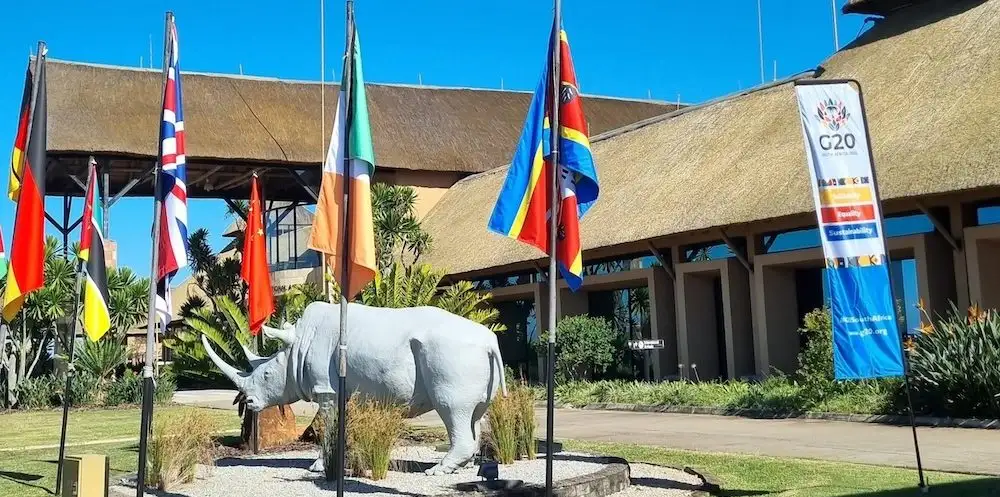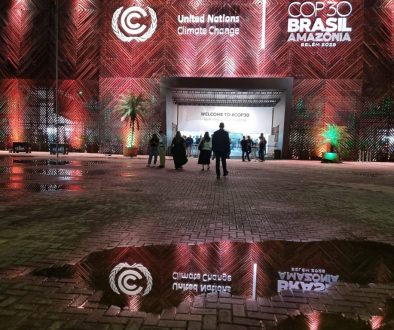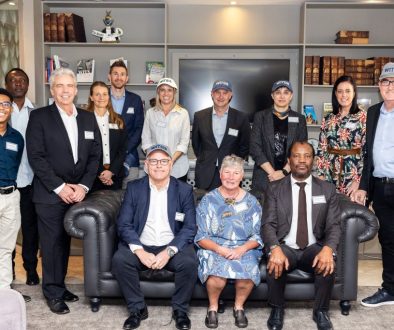G20 Bioeconomy Initiative Comes to South Africa
The second meeting of the G20 Initiative on Bioeconomy (GIB) took place in Mbombela, hosted by the DSTI. PAMSA’s Jane Molony attended and gained critical insights into emerging opportunities for the pulp and paper industry.
Day one comprised some fascinating discussions and presentations around Finance. A presentation by Jonathon First, Head of Africa, Climate Policy Initiative, on the need for financial capacity building and infrastructure in bioeconomy finance was of particular interest for our sector. As one of the potential sources of finance, he touched on carbon finance in the form of biodiversity credits and specifically the markets in South Africa. These, in turn, can guide other African carbon market development.
Are carbon and biodiversity credits imminent?
Credits are important for hard-to-abate industries where they have little choice but to buy credits to offset their emissions. On the supply side, banks have indicated an appetite to finance nature-based projects that could be used as offsets for these clients, but these projects need to be de-risked by a blended finance approach with a high degree of concessional and risk mitigation instruments. Integrity for buyers and traders is also key, and this needs a re-look at current methodologies, which hold back the demand side of the credits. In South Africa, there may be an opportunity to develop a local methodology that needs National Treasury support by way of a framework agreement. This development could have meaningful benefits in terms of developing the demand side by creating both market liquidity and a secondary market for credits and enabling financial institutions to commit their balance sheet to this market.
The forest bioeconomy is well-positioned to attract some of this nature-based investment in both plantations and the rehabilitation of ecosystem biodiversity.
Policy and trade: a seat at the table
Day two included a roundtable on G20 trade and the bioeconomy, chaired by Ilze Baron (right), Director of Green Industries at the Department of Trade, Industry and Competition (dtic).
Baron expressed interest in the carbon storage potential of sustainable forestry, requesting information for inclusion in the dtic’s Low-Carbon Economy Strategy — a significant opportunity for sector engagement.
Aligning metrics and strategies
Metrics for the bioeconomy were also discussed, with an excellent presentation by FAO’s Marta Gomez. Countries agreed that alignment with existing frameworks is preferable to creating new ones. South Africa’s bioeconomy strategy, led by DSTI, was shared as a case study, highlighting the importance of cross-country knowledge exchange.
The next G20 Bioeconomy meeting will take place in Pretoria this September, with participation limited to government representatives and select organisations.
Beyond the G20: Africa launches independent Bioeconomy Finance Hub
Africa’s Natural Capital Alliance (ANCA) head, Ms Dorothy Maseke (bottom right), then spoke to the proposal around forming a Bioeconomy Finance Hub along with Nature Finance.
The Finance hub would catalyse finance for a thriving nature-positive bioeconomy across Africa; it would be independent and aim to bring “actionable scale” to bioeconomy finance. The hub will aim to focus on four critical pillars: driving enabling policy, building capacity and leadership, accelerating investment pipelines and advancing KPI’s data and standards.
The potential value of the global bioeconomy is US$ 30 trillion by 2050, which is approximately 7 times higher than today’s value. Africa only benefits from 10% of its biomass capability and remains largely untapped due to persistent degradation. Ms Maseke stated that this Hub for bioeconomy finance has the potential to drastically change this story. They aim to mobilise more than 50 billion US dollars in private and public bioeconomy investments by 2035, reduce 30% of agricultural waste through circular bioeconomy models that regenerate ecosystems and reduce emissions and have 50% of the final value from Africa’s biomass captured by 2035. Up from the less-than-current 10%.
The organisation is looking for committed implementation and funding partners. If anyone is interested, they can contact Dorothy or Julie.

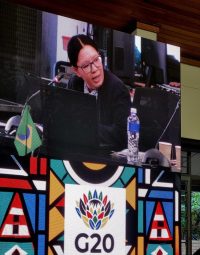

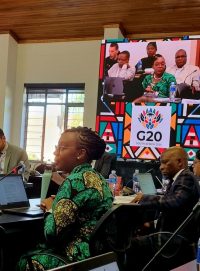
Forestry sector represented a G20 Bioeconomy Initiative side event at Kruger National Park
In a welcome collaborative effort, Forestry South Africa’s Norman Dlamini gave a presentation on the Forest Bioeconomy at the side event held in the Kruger National Park on day four. To ensure the entire value chain was addressed and to give people a taste of what the bioeconomy is all about, PAMSA requested Sappi to organise samples of some bioeconomy products made from trees.
Audiences often hear that anything that can be made from fossil fuels can be made from trees, but seldom get to interact with products from this “new bioeconomy” – pulp, paper, packaging and tissue being the “old bioeconomy” products. Thanks to FSA and Sappi for ensuring our sector was well represented at the side event.
The sugar industry also presented on the bioeconomy, so overall South Africa was an excellent host and seemingly even the leopards came out to show off to the foreign visitors!


